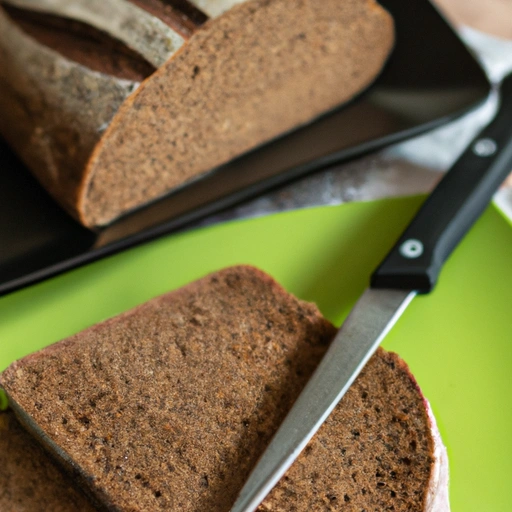Pumpernickel Bread
Description

Pumpernickel Bread is a dense, dark, and slightly sweet rye bread that originated in Germany. Traditionally made with coarsely ground rye flour and rye berries, this bread is known for its rich, deep flavor and hearty texture. Pumpernickel undergoes a long, slow baking process, which contributes to its characteristic dark color and distinct taste.
Common uses
Pumpernickel bread is commonly used as a base for open-faced sandwiches, served as an accompaniment to soups and stews, or presented as part of a charcuterie board. Its robust flavor complements a wide range of toppings and spreads.
Nutritional value
Calories
Approximately 250 calories per 100 grams (3.5 oz).
Protein
Approximately 8.5 grams (0.3 oz) per 100 grams.
Fat
About 2 grams (0.07 oz) per 100 grams.
Carbohydrates
Around 48 grams (1.7 oz) per 100 grams.
Vitamins
Contains traces of B vitamins, particularly niacin (B3) and folic acid (B9).
Minerals
Rich in minerals such as iron, magnesium, phosphorus, potassium, and zinc.
Health benefits
Pumpernickel bread is a good source of dietary fiber, which aids in digestion and promotes a feeling of fullness. The rye flour used in pumpernickel is also believed to help regulate blood sugar levels and has been linked to various health benefits, including improved heart health.
Potential risks
While pumpernickel is nutritious, it contains gluten, which can be problematic for individuals with celiac disease or gluten sensitivities. Additionally, due to its dense nature, it may cause digestive issues for some people.
Common recipes
Often featured in recipes for sandwiches, canapés, and as a robust complement to smoked salmon, cheeses, and cold cuts.
Cooking methods
The traditional method involves slow baking at a low temperature for up to 24 hours, which caramelizes the natural sugars in the rye flour.
Pairing with other ingredients
It pairs well with strong flavors such as blue cheese, pickles, and onions, as well as with sweet accompaniments like apple butter.
Summary
Pumpernickel bread is a versatile, flavorful bread rich in history and nutritional benefits. While it offers a plethora of health advantages, those with sensitivities to gluten should avoid it. Its rich flavor and dense texture make it an excellent addition to a variety of dishes, from simple sandwiches to elaborate appetizers, making it a beloved choice in both American and European cuisine.